

Which Wines Should Be Chilled Before Serving, and Why?
Summary
Which wines should be chilled before serving? In the summer, many wines benefit from being chilled to enhance their flavors and improve the drinking experience. Light-bodied reds like Beaujolais, Pinot Noir, and Gamay should be chilled to accentuate their fresh, vibrant flavors and soften their tannins. White wines like Sauvignon Blanc, Pinot Grigio, and Riesling, as well as orange and sparkling wines, should also be chilled to highlight their crispness and aromatic complexity. Fortified wines like Port and Sherry have specific ideal serving temperatures to balance their sweetness and alcohol content. Young wines generally benefit more from chilling than older wines, which are best enjoyed slightly below room temperature to appreciate their complexity.
Reflection Questions
Journal Prompt
It’s almost summer, which means many of us are ready to break out the light bodied reds and crisp whites we love to drink during those hot days. But which wines should be chilled before serving, and why? Certain wines benefit from being chilled before serving—including white, red, orange, and sparkling wine—because the cold enhances their flavors and overall drink-ability. Light-bodied, fruity, and low-tannin red wines—think Beaujolais, Pinot Noir, and Gamay—should be chilled to accentuate their fresh, vibrant flavors and balance their acidity, making them more refreshing and enjoyable, especially in warm weather.
White wines—like Sauvignon Blanc, Pinot Grigio, and Riesling—as well as orange wines, which are skin-contact whites, should be chilled to bring out their crispness and aromatic complexity. Sparkling wines and Champagne are best served well-chilled to preserve their bubbles and enhance their refreshing qualities. By serving these wines at the right temperatures, their unique characteristics can be fully appreciated. Whether dessert wines or biodynamic reds grace your home’s wine rack, read on to learn more!
Answering All Your FAQs About Chilling Wine
What’s the Best Way to Chill Wine?
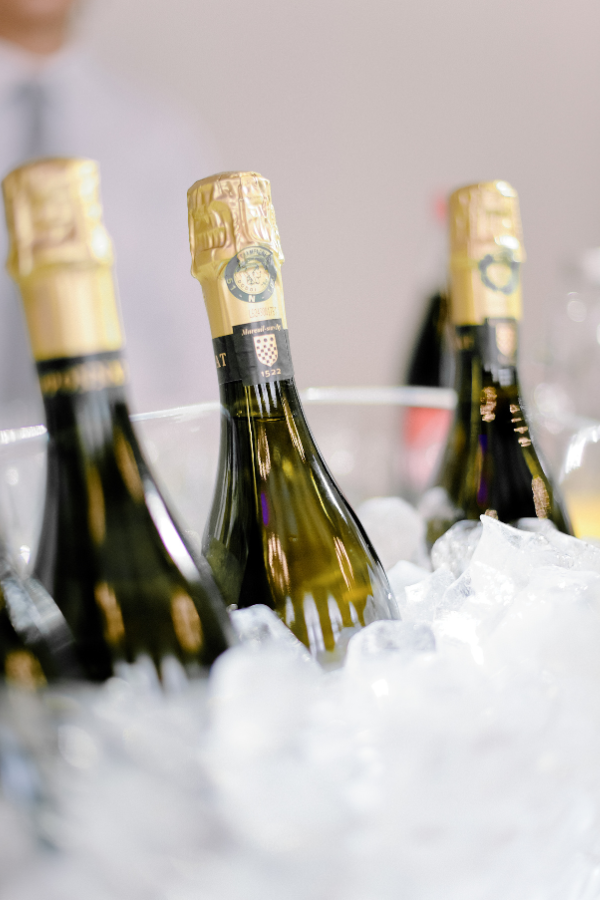

Wine lovers know that the best way to chill wine depends on how quickly you need it to reach the desired temperature. To chill wine quickly, fill an ice bucket with equal parts ice cubes and water, then submerge your bottle of red or white wine for about 15-20 minutes. This method cools the wine rapidly. It works for last-minute preparations, but is not recommended for all wines as the desired temperature varies based on the type.
If you have a bit more time, placing the wine bottle in the refrigerator for about 30-45 minutes is effective for a moderate chill. For a more gradual and controlled cooling, a wine cooler or dedicated wine fridge set to the appropriate temperature (50-55°F for light reds and 55-60°F for medium-bodied reds) ensures the wine reaches the perfect temperature without any rush.
Additionally, using a pre-frozen wine chilling sleeve can provide a quick and convenient way to chill a bottle. However, it’s advisable to avoid using the freezer, as this can result in uneven cooling or, if left too long, freezing and potential breakage of the bottle. By selecting the right method based on your available time, you can ensure your wine is perfectly chilled and ready to enjoy.
Why Should Certain Reds Be Chilled Before Serving?
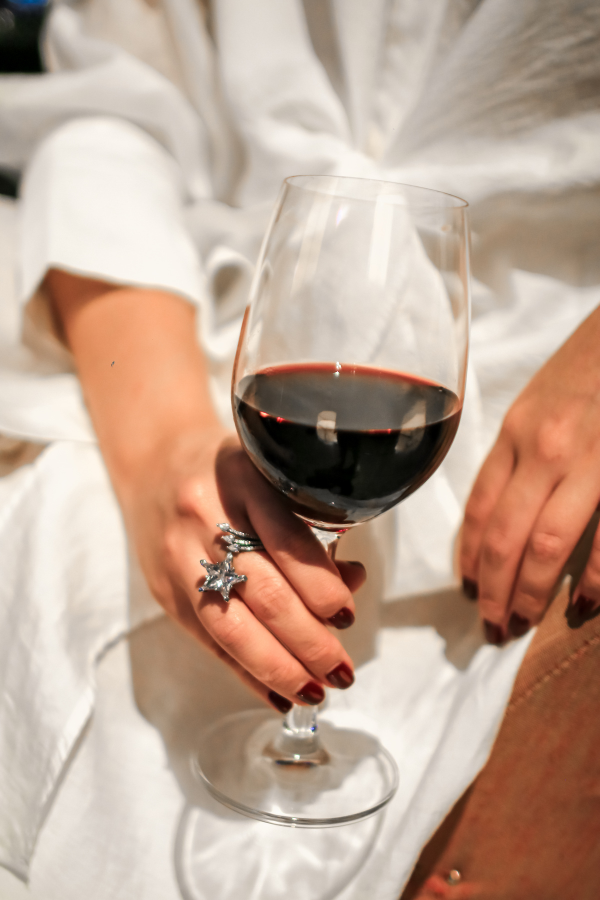

Should red wine be chilled? It might seem counterintuitive, but sommeliers actually recommend that we drink red wines chilled under certain circumstances. Certain red wines, particularly young, lighter bodied reds, and fruity ones, benefit from chilling because it enhances their fresh, vibrant flavors and balances their acidity. Chilling also softens the perception of tannins, making these wines smoother and more enjoyable. This practice is especially refreshing in warm weather and complements lighter dishes well. Let’s take a closer look at why chilling reds makes sense for certain grapes.
Enhancing Fruitiness
Chilling red wine can accentuate the fruity aromas and flavors in lighter versions. The cooler temperature suppresses some of the alcohol’s impact, allowing the fruit notes to shine through more vividly. This makes the wine taste fresher and more vibrant.
Balancing Acidity
Wines with higher acidity, such as Beaujolais or Barbera, benefit from being chilled because the lower temperature can balance the acidity, making the wine taste more refreshing and less sharp. This balance is particularly pleasing in warm weather or with light, summery dishes.
Softening Tannins


Tannins are compounds in both red and white wines that can give it a bitter, astringent quality. In lighter red wines with lower tannin levels, when you drink slightly chilled, you can soften the perception of these tannins. By softening the harsh flavor of tannins, the wine becomes smoother and more palatable. This is especially beneficial for people who find tannic wines too harsh. However, serving at room temperature can also soften tannins, so we recommend consulting with an expert before drinking a special bottle of wine.
Refreshing Quality
Chilled wines are more refreshing and can be a delightful alternative to heavier, room-temperature reds, especially in hot weather. The cool temperature provides a crisp, invigorating sensation that is particularly enjoyable during summer.
Highlighting Delicate Flavors
For wines with subtle, delicate flavors, such as Pinot Noir or Zweigelt, chilling can help preserve and enhance these nuances. The lower temperature slows the evaporation of aromatic compounds, allowing the wine’s intricate flavors to be appreciated more fully.
Fuel your creative fire & be a part of a supportive community that values how you love to live.
subscribe to our newsletter
Pairing with Food
Chilled red wines often pair better with certain foods. For example, a slightly chilled Grenache can complement grilled vegetables or cold cuts, while a chilled Lambrusco pairs wonderfully with charcuterie and cheeses. The chill enhances the wine’s ability to refresh the palate between bites.
Reducing Perception of Alcohol
Lower temperatures can make the perception of alcohol less pronounced, making the wine taste lighter and more refreshing. This is particularly beneficial for red wines with higher alcohol content that might otherwise taste too warm or strong at room temperature.
Should These Wines Always Be Chilled or Just During Summer?


These lighter red wines should not necessarily be chilled only during the summer; however, the context in which they are enjoyed often dictates whether chilling is beneficial. Chilling these wines is particularly appealing in warm weather because it enhances their refreshing qualities, making them more enjoyable and thirst-quenching. Summer months, with their higher temperatures, tend to favor lighter, crisper, and more vibrant wines, which are further enhanced when slightly chilled.
That said, chilling these wines can also be appropriate at other times of the year depending on the setting and food pairings. For example, a lightly chilled Pinot Noir or Beaujolais can complement a variety of dishes year-round, including poultry, fish, and salads, providing a refreshing counterpoint. Additionally, in indoor environments with heating, a slightly chilled wine can still offer a balanced and pleasing drinking experience. Ultimately, personal preference and the specific characteristics of the wine should guide the decision to chill, rather than strictly adhering to seasonal norms.
Which Wines Are Best Served at Room Temperature?
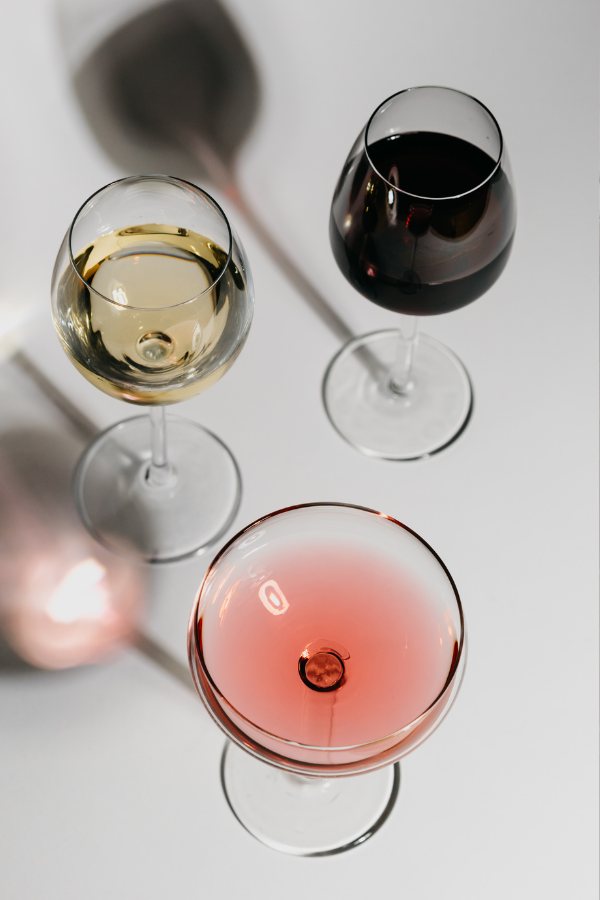

Not all white and red wine styles are best served chilled. Full-bodied red wines and certain white wines are best served at room temperature to fully appreciate their complex flavors and aromas. Room temperature, typically around 60-65°F (16-18°C) for reds and slightly cooler for some whites, allows the intricate layers of these wines to unfold and be appreciated.
Unlike wine chilled to a frosty temp, the warmth helps to soften the tannins, enhancing the wine’s structure and depth while allowing the bouquet to develop fully. Serving these wines at room temperature ensures that the rich, robust characteristics and the nuanced flavors created through aging are experienced in their entirety.
Wines best served at room temperature include…
- Cabernet Sauvignon
- Merlot
- Syrah/Shiraz
- Zinfandel
- Malbec
- Bordeaux Blends
- Tempranillo
- Nebbiolo (Barolo, Barbaresco)
- Châteauneuf-du-Pape
- Amarone della Valpolicella
- Chianti Classico
- Sangiovese
- Aged Chardonnay
- White Burgundy
Do Young or Old Wines Especially Benefit from Chilling?
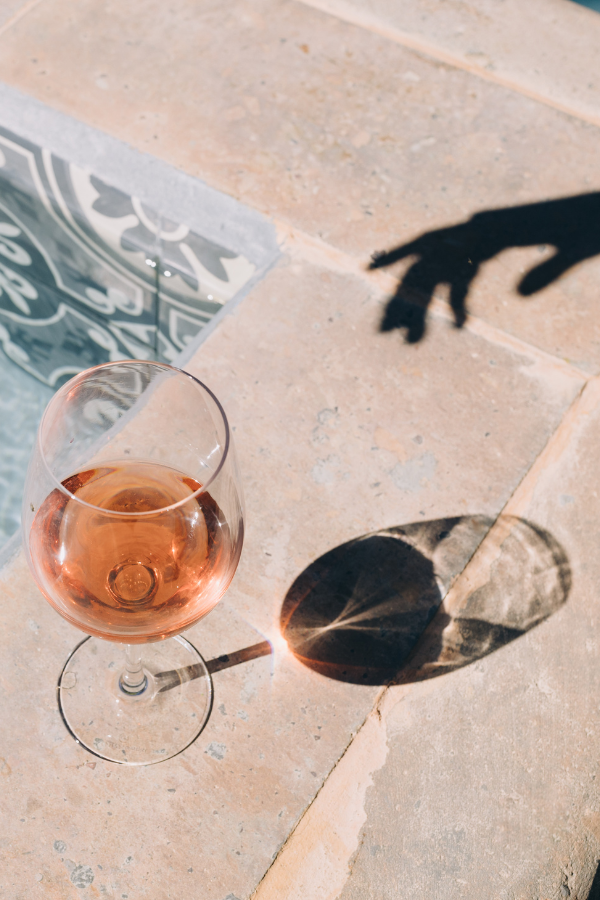

Young wines, particularly those that are light-bodied, fruity, and low in tannins, generally benefit more from chilling compared to older wines. Chilling enhances the pronounced fruit flavors in young wines, making them taste fresher and more vibrant. Many young wines, especially lighter reds, have lower tannin levels, and chilling can soften the perception of these tannins, creating a smoother and more enjoyable drinking experience. Additionally, the higher acidity often found in young wines is amplified and balanced when served slightly chilled, making them especially refreshing and suitable for warmer weather or lighter dishes.
In contrast, older wines develop more complex aromas and flavors over time, which can be muted when the wine is too cold. The chill can suppress the aromatic compounds, diminishing the wine’s nuanced characteristics. Older wines typically have more integrated and mellowed tannins due to aging, and chilling might dull their intricate flavor profile rather than enhance it. Moreover, older wines are more delicate and sensitive to temperature changes; serving them too cold can compromise their complexity and the balance of flavors developed over time. Therefore, older wines are generally best enjoyed at slightly cooler than room temperature to fully appreciate their depth and nuances.
What Are the Ideal Serving Temperatures for Reds?
- Young, Light-Bodied Reds (e.g., Beaujolais, Gamay): 50-55°F (10-13°C)
- Young, Medium-Bodied Reds (e.g., Pinot Noir, Grenache): 55-60°F (13-16°C)
- Older Reds and Full Bodied Red Wine: Typically served at slightly below room temperature, around 60-65°F (16-18°C), to fully appreciate their complexity.
What Are the Ideal Serving Temperatures for Whites?
- Sparkling Wines and Champagne: 40-50°F (4-10°C)
- Light-Bodied Whites (e.g., Pinot Grigio, Sauvignon Blanc, Vermentino): 45-50°F (7-10°C)
- Medium-Bodied Whites (e.g., Riesling, Chenin Blanc, unoaked Chardonnay, Pinot Blanc): 50-55°F (10-13°C)
- Full-Bodied Whites (e.g., oaked Chardonnay, Viognier, White Burgundy): 55-60°F (13-16°C)
What Are the Ideal Serving Temperatures for Fortified Wines?
Fortified wines like Port also have ideal serving temperatures that can enhance their complex flavors and aromas. While these wines are typically enjoyed at slightly higher temperatures than most white wines, they can still benefit from some chilling to balance their sweetness and alcohol content.
- Port (Ruby, Tawny, Vintage): 60-65°F (16-18°C)
- Sherry (Fino, Manzanilla): 45-50°F (7-10°C)
- Sherry (Amontillado, Oloroso): 55-60°F (13-16°C)
- Madeira: 55-60°F (13-16°C)
What About Biodynamic Wines?
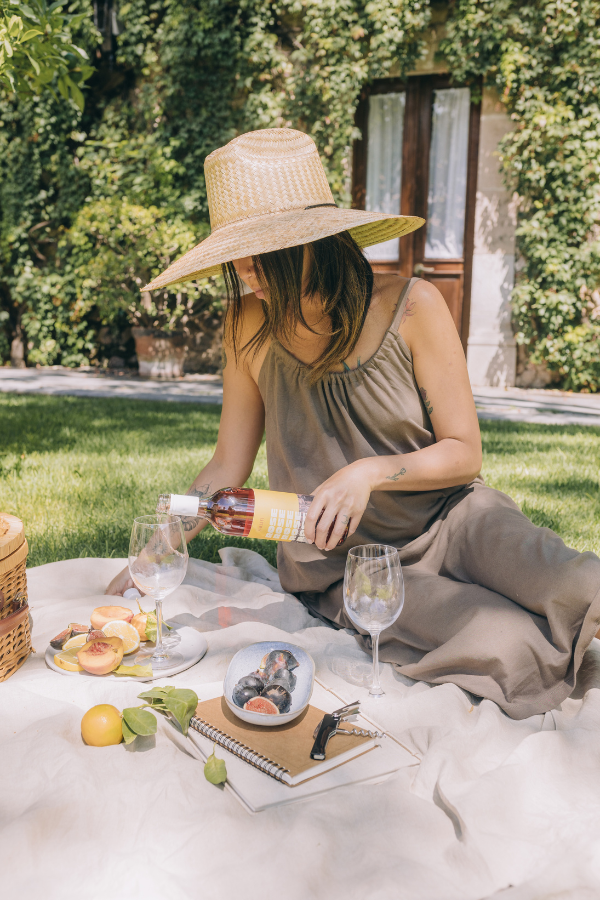

Biodynamic wines, like other wines, are best served at temperatures that enhance their specific characteristics and flavors. The principles of biodynamic winemaking, which emphasize natural processes and holistic farming, can produce wines with unique and expressive profiles.
- Sparkling Biodynamic Wines: 40-50°F (4-10°C)
- Light-Bodied Biodynamic Whites: 45-50°F (7-10°C)
- Medium-Bodied Biodynamic Whites: 50-55°F (10-13°C)
- Full-Bodied Biodynamic Whites: 55-60°F (13-16°C)
- Light-Bodied Biodynamic Reds: 50-55°F (10-13°C)
- Medium-Bodied Biodynamic Reds: 55-60°F (13-16°C)
- Full-Bodied Biodynamic Reds: 60-65°F (16-18°C)
Looks Like You’re Ready to Entertain!
Which wines will you serve during your summer soirée? Please let us know in the comments below!
Design Dash
Join us in designing a life you love.
-
All About Our 7-Day Focus & Flex Challenge
Sign up before August 14th to join us for the Focus & Flex Challenge!
-
Unique Baby Names Inspired by Incredible Women from History
Inspired by historic queens, warriors, artists, and scientists, one of these unusual baby names might be right for your daughter!
-
Finding a New 9 to 5: How to Put Freelance Work on a Resume
From listing relevant skills to explaining your employment gap, here’s how to put freelance jobs on your resume.
-
What is Generation-Skipping, and How Might it Affect Sandwich Generation Parents?
The emotional pain and financial strain of generation skipping can be devastating for Sandwich Generation parents.
-
Four Material Libraries Dedicated to Sustainability, Preservation, and Education
From sustainable building materials (MaterialDriven) to rare pigments (Harvard), each materials library serves a specific purpose.
-
Do You Actually Need a Beauty Fridge for Your Skincare Products? (Yes and No.)
Let’s take a look at what dermatologists and formulators have to say about whether your makeup and skincare belong in a beauty fridge.








